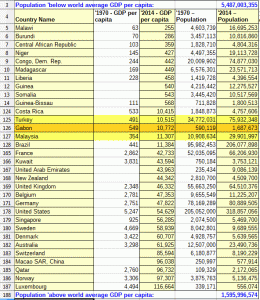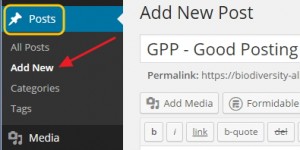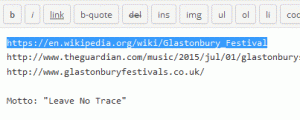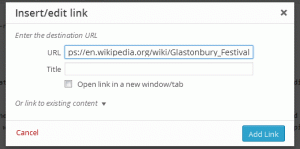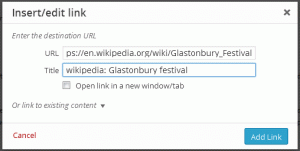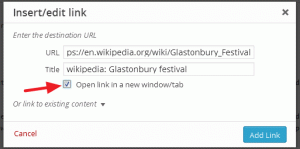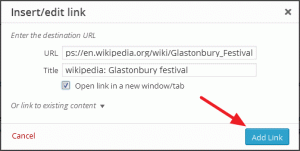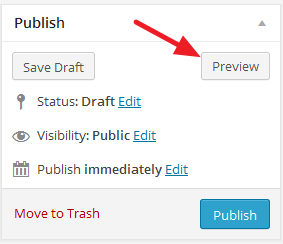Sorry, but you do not yet have permission to view this content.
Author Archives: Janos
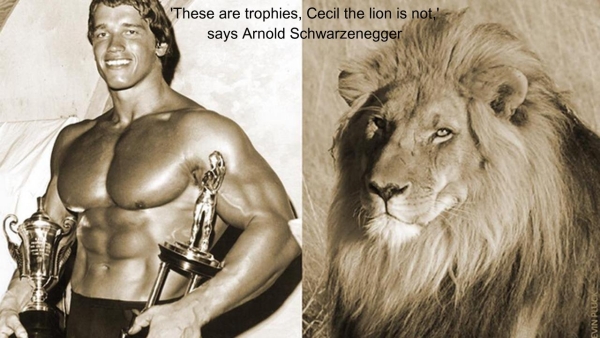
Ban photos of trophy hunters posing with their dead pray on LinkedIn
LinkedIn should not tolerate sharing photos of people posing with killed animals.
- LinkedIn is not the venue for trophy hunters’ self marketing
- Posing with an animal killed just for the fun of it is highly inhumane, moraly unacceptable
- Publicity on social media is an additional motivating factor for those who like to kill
- Trophy hunters frequently target endangered or even critically endangered species, their acts are often illegal
The prequel of this post can be found on LinkedIn.

Overpopulation versus Conspiracy
The remaining set of 183 countries has been sorted in ascending order based on ‘GDP per capita – 2014’.The world average GDP per capita for 2014 according to the World Bank’s own calculation, also included in the initial data set, was 10,721 USD with a total of 7,261 billion people.Calculations:In the cleaned list of data sorted by countries’ ‘GDP per capita’, the closest value to the world average is Gabon‘s at 10,772 USD (preceded by Turkey at 10,515 USD, followed by Malaysia at 11,307 USD).Calculating the sum of the countries’ total GDP in 2014 as an indicator of their consumption (proportionate to footprint) results in the following figures:- Countries with above world average GDP per capita: 54,651 billion USD with a population of 1,596 billion people- Countries with below world average GDP per capita: 21,783 billion USD with a total population of 5,487 billion people.Here a clear sign of inequality can be seen, given that roughly 22% of the world population claims 2.5 times more GDP than the remaining 78% of the world population.Let’s now calculate the total GDP if everybody with a current ‘below world average GDP per capita’ had exactly as much as Gabon, so that an invisible hand suddenly raised living standards in these countries:- 5,487 billion people * 10,772 USD (GDP per capita in Gabon) = 59,106 billion USDSo the footprint of these countries would grow 3 times the size of their 2014 footprint.If the countries with current ‘above average GDP per capita’ levels lived on the level of Gabon:- 1,596 billion people * 10,772 USD (GDP per capita in Gabon) = 17,192 billion USDThe difference between the wealthier countries’ current footprint and their hypothetically lower ‘Gabon’s average’ footprint is 37,459 billion USD.If we were to distribute this 37,459 billion USD among everybody so that each person had the same GDP per capita at the end, the result obviously would be the world average – very close to Gabon’s GDP per capita.Would it be good enough?It appears it wouldn’t, because at the same time we can observe that – as we speak – people from countries like Syria, Afghanistan, Bangladesh, etc.are not migrating to Gabon.They stop over in Turkey and in Greece only as long as absolutely necessary.They then move on to Germany, the UK, or France, where the average GDP per capita – in contrast with Gabon’s 10,772 USD – is 4 to 5 times higher (France: 42,733 USD, UK: 46,332 USD, Germany: 47,822 USD)It is necessary to underline the importance of the AVERAGE GDP per capita figures used.So we are not talking about people like a bank CEO.We are talking about GDP per capita of an average person who most probably works 8-9 hours a day, 5 days a week, commutes 1-3 hours to their working place and lives in an average-sized apartment.Conclusion:If we distributed all the GDP of the wealthier top 22% among everybody, including those below the average GDP per capita level 78%, then- we would have 7,261 people living on the average Gabon citizen’s level- we would still consume 1.5 of planet Earth’s capacity, hence the Earth would be overpopulated by 50% even in this case- we would effectively lose the required capital for large scale investments financing research, building eco-friendly power plants, etc.If we expect the whole population of this planet to live on the level of Germany, then we could/should have a GDP amounting to 347,221 billion USD, which is 4.5 times higher than the current global GDP, using 4.5 * 1.5 = 6.75 of planet Earth’s capacity.To put it plainly, and in a somewhat oversimplified context: If two people own some chickens, and one day they decide to eat all the eggs they can find plus one chicken as well (consuming more than their carrying capacity), and they continue this exercise every time they collect eggs, sooner or later there will be no chickens and no eggs, regardless of how they share the eggs and the meat of the chicken between each other.This post is written as a reply to a comment stating: “Human overpopulation being an excuse to hidden conspiracies against more vulnerable groups.”This statement is worth another post which I will share later.Here I only would like to highlight the following:According to WWF’s Living Planet Report 2014 the global human footprint exceeded the Earth’s carrying capacity by 50%.(I think it is a very conservative approach, again another post later.)Based on that and on the figures presented above, we can clearly see that sharing global GDP equally among the human population could bring everybody an average Gabon citizen’s living standard, which appears to be much lower than the living standard sought by ‘more vulnerable groups’, i.e.those who live below the world average.Raising living standards above the world average requires additional resources, namely ecosystem resources.Our planet has to be enlarged, stretched.But it doesn’t work.Living standards currently can be increased mostly by making more damage to the planet, while populations are constantly and exponentially rising especially in vulnerable countries.So it is quite clear that the current trajectory of global ‘development’ is completely unsustainable.Of course it cannot be excluded that one day technologies and people’s ethical norms will be developed enough to secure reasonable living standards for many billions of people.Following current global trends, however, by the time this advanced level of technology and ethical norms arrive, all untouched regions will be destroyed and the majority of currently living species will be extinct, at least in the wild.

CO2 Accounting and Other Wicked Tricks
Motto 1: There’s no news like bad news.
[Tomorrow Never Dies (1997), Elliot Carver]
As COP21 in Paris is approaching, bad news started to appear. Bad?! – Horrific!
The window of opportunity for human beings to set the trajectory of the global surface mean temperature increase to a less devastating course is closing rapidly. And by unfathomable will of destiny in these days terrorist attacks at the very same place of COP21 led to banning of public marches, including those which had been prepared since months by some many civil activists and conservation organizations.
Reading the comments on these publications it is impossible not to recognize how divided, confused, and bitter the commenters are. Perhaps the only one common denominator among them is the waiting for the miracle. The miracle that one or another party on COP21 will be able to pull a rabbit out of a hat, and our planet together with us will be saved from the devastating effects of Climate Change. But it won’t happen.
Motto 2: The key to a great story is not who, or what, or when…but why.
[Tomorrow Never Dies (1997), Elliot Carver]
Why it won’t happen?
Like in a Greek drama, the causes are many and they can amplify each others’ effect.
Governments (most of them) follow the rules dictated by the financial world (financial world: nickname of Game Changers). The financial world is set to grow. If tomorrow stock markets learned that global consumption fell by 6.6% each year during the next 15 years period, there would be a global financial collapse. It must not happen! Let’s rather bravely face with the Climate Change!
Governments are elected to bring prosperity and growth for each of us. That is why they don’t even want to hear about reducing consumption. Geoengineering is much more easy approach. It is true, that it takes a while to invent all those new technologies which possibly could bring us some expected outcome. By the time these experiments will be successfully or unsuccessfully completed, members of the recent governments will spend their retirement in their small bungalow by writing their memoirs.
The said truth is that in order to avoid worst case scenario and keep the global mean temperature increase below 2 Celsius (with acceptable probability), our global society must decrease GHG emission by 6.6% on average every year to reduce it to (nearly) zero within the next 15 years. Due to the fact, that whatever we consume (beef, chicken, bottled water, etc) costs energy to produce and to transport, and wast majority of energy production is still based on fossil fuel, the only way to reach the goal is to reduce consumption.
What is the first step and the secret to reduce something effectively? The secret is to measure it. Our CO2 emission must be measured through measuring our consumption. It is not a rocket science. There are huge number of various tools available already providing ways for offsetting CO2 emission. Airlines, NGOs offer online tools to calculate our CO2 emission when we fly, drive, travel by train, or purchase a T-shirt.
Without making individual contribution to the global CO2 emission visible, there will be no success. Governments are just to busy with securing our well-being to invent such ideas. However, they can be pushed to help us to make the infrastructure available for everybody to measure and account individual CO2 emission. The know how and the technology is available to make it happen, it is the question of will only.
There are some who rightly point to the fact that by eating (much) less meat, especially beef and pork, it is also possible to save huge amount of CO2 emission and sewage production.
By pushing our government to make CO2 accounting infrastructure available everywhere and by eating much less meat we can individually contribute to GHG emission reduction targets.
If you like the idea of CO2 accounting, please vote on the poll above and share this content with everybody in your network. If you don’t like the idea of CO2 accounting, please propose another way with which we can monitor and lower our consumption effectively.
Greenpeace India
Recently I’ve received the message below. It seems hard times ahead for Indian conservationist NGOs. 🙁 I wish we could help.
Dear Janos,
I have just been informed that the Greenpeace India society status has been cancelled – and we’ve been told to pass a resolution to wind our operations up.
This is another attack on your rights of freedom of speech. And as someone who has supported our campaign for the right to dissent in a democracy – we need your support now more than ever.
Sign the petition to Ban Ki-moon, UN Secretary-General
India is the world’s largest democracy but the right of Indians to speak out is under threat. Civil society organisations like INSAF, the Sabrang Trust, Citizens for Justice and Peace, People’s Watch and Greenpeace India are all under attack in a government clampdown.
The cancellation of our society status is the most serious attempt to close us down yet. We will challenge this order in the courts. But we also need to tell the world what is happening in India.
In one month’s time on Human Rights Day (10th December), Greenpeace India will deliver your messages to the United Nations. We don’t have much time so please;
Ask Ban Ki-moon to lend his voice in support of free speech and civil society in India
For more than 15 years, Greenpeace India has been working alongside like-minded groups, to ensure that Indian citizens like you and I, have access to clean energy, food, air and water. But now, perhaps because of our successful campaigns, the Ministry of Home Affairs is trying to close us down.
But if enough of us raise our voices, if we tell our friends, and share the news on social media, then together we can make a stand for civil society and democracy in India.
Please sign the petition to Ban Ki-moon.
Thank you for your support; it is what gives me hope
Priya Pillai
Greenpeace India

Eco-Austerity: The Greens and The Left vs Digging and Values
Recently The Guardian presented the readers with real gem from Red Pepper science writer and journalist WordPress: Leigh Phillips titled “The Guardien: Why eco-austerity won’t save us from climate change“.
In this writing Mr. Phillips, lumping wide variety of eco-friendly and conservationist movements together with political ideologies on the left, arrives to the conclusion that talking about unnecessary and resource wasting consumption (over-consumption) is not only inappropriate, as the wast majority of people living in the so called ‘developed’ countries consume much less than they need, but also harmful for the prosperous future of humanity. He confidently states that “The truth is that we can stop climate change and deliver expanding wealth for all.”
What seem to be missing from his train of thoughts are only the appropriate reasoning and any scientific evidence supporting his discovery. The apparent contradiction between living in a finite system and delivering expanding wealth for ever growing population is something which does not even worth to think about.
The term ‘eco-austerity’ in his writing is intended to serve as a stigma on everything and everybody, which and who do not support and in favour of growth- and profit-centric view of the world. In his interpretation the secret to saving the world from climate change is “above all, large amounts of cheap capital”. Because “An entrepreneurial, risk-taking, mission-oriented public sector got us into space, and it’ll be the same sort of public sector that saves the planet.” The globally recognizable Tragedy of the Commons seemingly does not concern Mr. Phillips.
There is another humble, nearly undiscoverable writing titled Cultural values of digging from Farida Vis and her team from 2014 January is also about the subject eco-austerity, referring to it from completely different aspects. It highlights the fact how important it is to use scarce resources wisely and how it can create cultural values. This study is much less propagandist and more thoughtful to find long lasting values.

Card Payment Activated
Credit and Debit card payment is activated and operational on our website.
After the registration process by the Swiss Authorities has completed and we obtained our official identification number, every precondition has been given to activate this feature which allows the rest of the world to support our efforts in favour of protecting biodiversity.
At the top menu there is a page YOUR IMPACT > DONATE where bank card transfers can be initiated.
There is no lower or upper limit for the transfer, for which any VISA, MATER CARD, AmEx card or PayPal account is accepted.
Should you wish to donate by using other systems currently not available, please drop an email to us.
The bank card transfer functionality is provided and processed by secure 3rd party applications and interfaces. We, The Biodiversity Alliance do not access, process or store any information required for the identification and validation process.
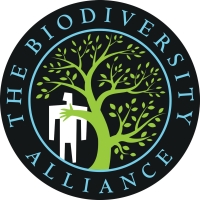
Our new Logo
Important component of building our Brand is a logo, which now has been designed for us by Jules Akel.
I wonder how do you interpret the message of it.

We are a legal entity
As the process of registration finally has rolled through the Swiss Commercial Registration Office (HRA – Handelsregisteramt) I’d like to share the brief list of steps we were required to accomplish to reach this important milestone.
Logged-in visitors will be able to see a pretty table below. Register here if you don’t have your ID yet.
For those non-(native)-German speakers, who might wish to found an organization in Switzerland, it might be especially interesting to know about some of the steps in this process.
The cost of the above process will be published in the financial report of The BA during the coming weeks.
GPP – Good Posting Practice – II
Let’s review the technical aspects of creating a post. How can it be done in our WordPress editor? Sit back and relax. It’s easy. The description below is meant to guide a the first steps of a new member having no experience with WordPress-based websites.
- Step 0: Log in into The Biodiversity Alliance WordPress website.
- You have to be a registered Member on our website to be able to create a Post. After you logged in you will see a narrow black strip on the top, and a wide one on left of your browser window with various menu elements.
- Step 1: Add a New Post
- Either drag your cursor on the top strip over the ‘+ New’ element and select ‘Post’ from the appearing menu, or click on ‘Post’ on the left side strip and select ‘Add New’.
- Now you will see the ‘Add New Post’ editor with several things around but you need to focus only few of them. First of all make sure that the ‘Text’ editor is active, not the Visual one (so if you hover your cursor over ‘Text’ it remains gray and does not change to blue with highlighted white background).
- Step 2: Select an attractive title
- It sounds to be trivial but it isn’t. A good title is a one which rises the reader’s interest. From information theory viewpoint the lesser the probability of the event or occasion suggested by the title is, the higher the chance to raise interest. Sounds complicated. Let’s consider a title ‘The Sun will set today’. The probability of the event is almost 1. It has never happened otherwise. Boring. ‘The Sun will not set today’ seems to be more unusual, and more likely to catch attention.
- Step 3: Create the body of your post
- You can type in your text into the editor window but it is sometimes more convenient to craft your text in a separate text editor outside of our website, and when you are done just copy and paste it into the WordPress editor. WordPress also has a spell checker built in which helps spotting typos.
- Step 4: Inserting links (optional)
- If you are referring to other web content in your post you might want to insert a link pointing to that piece of content. This can be done in an elegant way. Inserting just the web address as a non clickable link is not that elegant. Instead you can have an appropriate title or any word you wish to use, and you can add a link to it.
- Step 4-1: Copy the link into your clipboard
- If you want to refer to an article on another portal, open a new browser tab or window, go to that article and in the address bar select the link and hit CTRL-C. I used to copy the link into my draft to keep it together with my text before I start creating my post in WordPress.
- Step 4-2: Select the word(s) to add a link to
- You might want to use the same title what your link is pointing to or anything else you think appropriate in your text. Select the text you want a link to add to.
- Step 4-3: Activate the link editor
- Click on the ‘link’ button, the 3rd one normally, right above your editor window. You will see a small windows popping up with which you can edit and customize your link.
- Step 4-4: Copy the link from your clipboard
- Copy the link from your clipboard into the upper text box labelled URL in the popup window.
- Step 4-5: Add a title to the link
- The title of the link will be shown when the reader of your post hover the cursor over your link. It is good to try to be consistent especially if you are posting frequently. I used to put the name of the source at the beginning of the title, such as ‘wikipedia’ or ‘The Guardian’ and after a colon comes the subject.
- Step 4-6: Select ‘New Window’
- By selecting the ‘New Window’ you tell the browser to open a link in a separate browser tab (or window) when the reader clicks on it. It is important because this way the window with your post remains open and the chance that the reader will continue reading and perhaps commenting it is higher.
- Step 4-7: Add your Link
- The last step of creating your wonderful link is completed by clicking on ‘Add Link’ button.
- Step 5: Preview your post
- At any point in time you can check and see your shaping post by clicking on the ‘Preview’ button on the right side widget titled ‘Publish’.
- Step 6: Publish your beautiful post
- When you are done just click on the blue ‘Publish’ button in the lower right corner of the ‘Publish’ widget. In that widget you can see few other properties, just leave them on their default values.
With the above six main step you created your great post. Congratulation!
The 3rd piece of GPP series I’ll show some housekeeping practice with which we can keep all of our posts consistently nicely.

